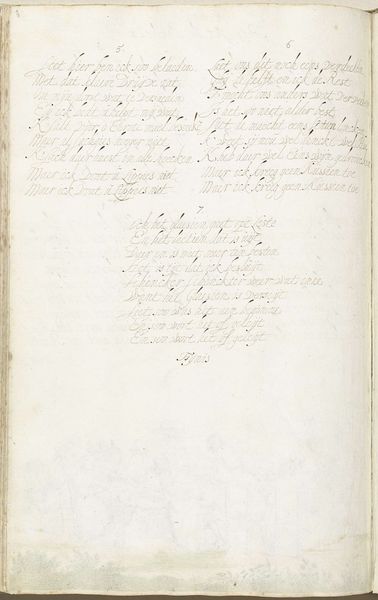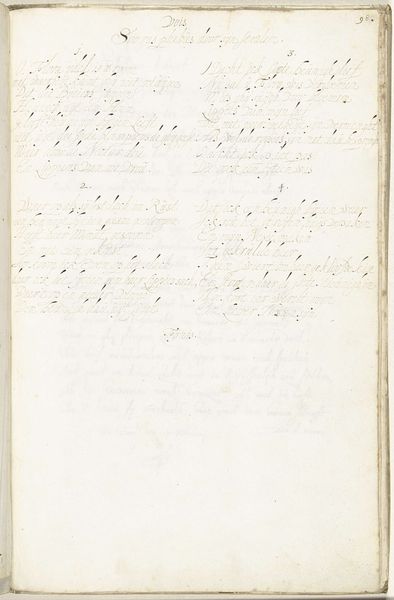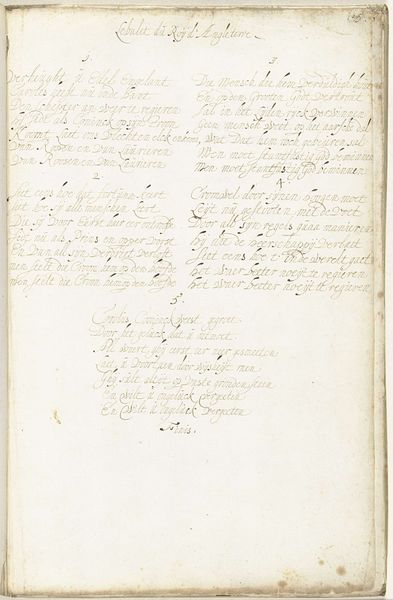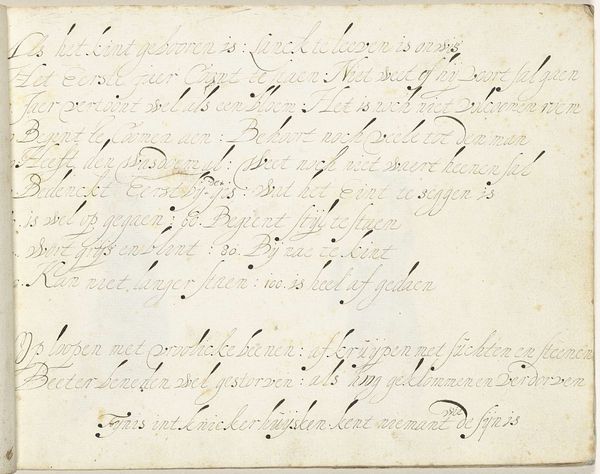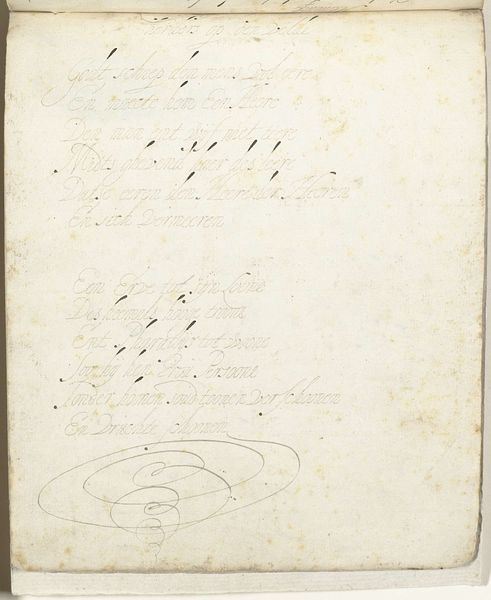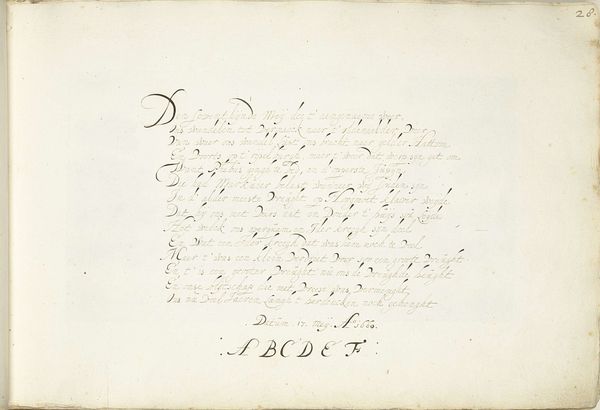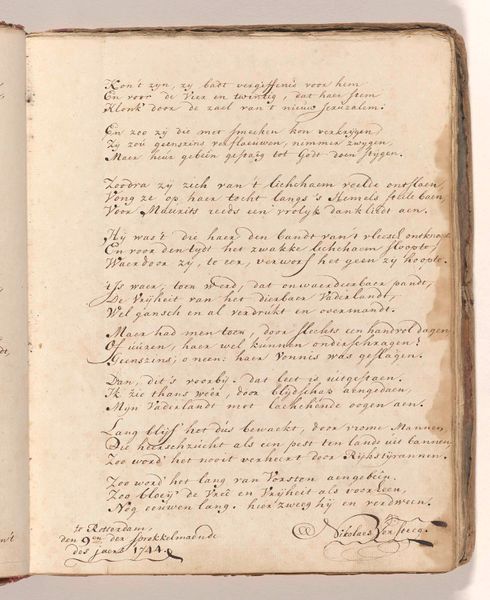
drawing, paper, ink
#
portrait
#
drawing
#
dutch-golden-age
#
paper
#
ink
#
watercolour illustration
#
watercolor
#
calligraphy
Dimensions: height 313 mm, width 204 mm
Copyright: Rijks Museum: Open Domain
Gesina ter Borch created this ink drawing, *Rouwgedicht voor Moses ter Borch (deel 2)*, sometime in the mid-17th century. At first glance, the drawing appears as a field of script, rendered in delicate, curvilinear lines against the aged paper. The contrast between the dark ink and the light, subtly stained background creates a visual rhythm that invites close inspection. However, the flowing script is not merely decorative; it's a poem, a lament for the artist's brother, Moses. Ter Borch uses the structure of language itself as a medium, transforming personal grief into a carefully constructed visual form. The poem’s dense composition, contained within the page's boundaries, evokes a sense of enclosure. Consider how the act of writing, the very creation of this piece, serves as both an expression of sorrow and an attempt to order and contain it within a formal structure. The poem’s visual appearance, with its formal composition and controlled execution, provides us with a deeper understanding of the complex relationship between emotion, representation, and artistic form.
Comments
No comments
Be the first to comment and join the conversation on the ultimate creative platform.


